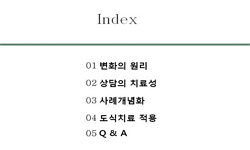In 1983, investigators first described winter seasonal affective disorder (winter SAD) as a subtype of depression that included sleep, eating, mood and sociability symptoms that appeared to correlate primarily with the onset and duration of the late ...
http://chineseinput.net/에서 pinyin(병음)방식으로 중국어를 변환할 수 있습니다.
변환된 중국어를 복사하여 사용하시면 됩니다.
- 中文 을 입력하시려면 zhongwen을 입력하시고 space를누르시면됩니다.
- 北京 을 입력하시려면 beijing을 입력하시고 space를 누르시면 됩니다.
Winter seasonal affective disorder: Epidemiological evidence for the light-deprivation hypothesis.
한글로보기https://www.riss.kr/link?id=T10593205
- 저자
-
발행사항
[S.l.]: The University of Texas at Austin 2003
-
학위수여대학
The University of Texas at Austin
-
수여연도
2003
-
작성언어
영어
- 주제어
-
학위
Ph.D.
-
페이지수
169 p.
-
지도교수/심사위원
Supervisor: Frank C. Richardson.
-
0
상세조회 -
0
다운로드
부가정보
다국어 초록 (Multilingual Abstract)
In 1983, investigators first described winter seasonal affective disorder (winter SAD) as a subtype of depression that included sleep, eating, mood and sociability symptoms that appeared to correlate primarily with the onset and duration of the late fall and winter months. The light deprivation hypothesis posits that some individuals have a bio-rhythmic susceptibility to depression that is dependent upon the length of exposure to appropriate intensities of ambient light. Epidemiological findings have suggested that prevalence rates for this disorder are positively associated with latitude. At higher latitudes, daylight exposure in terms of both time and illuminance decreases substantially during the winter months. This study tested the latitude-prevalence relationship by collecting published epidemiological surveys meeting study criteria and evaluating the relationship between latitude and prevalence after controlling for relevant demographic and study characteristics. Statistical models were developed to evaluate the latitude-prevalence relationship. The results indicated that latitude had a significant positive relationship with prevalence when no other factors were taken into account. However, when the models included sample age, date of survey administration or regional differences, the relationship between latitude and prevalence was no longer significant. The negative findings for the latitude-prevalence relationship do not support the light-deprivation account for winter SAD. The study discusses the findings in context of design limitations as well as possible alternative accounts to the light-deprivation hypothesis for winter SAD.











